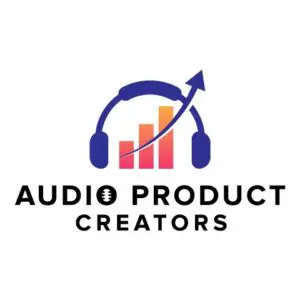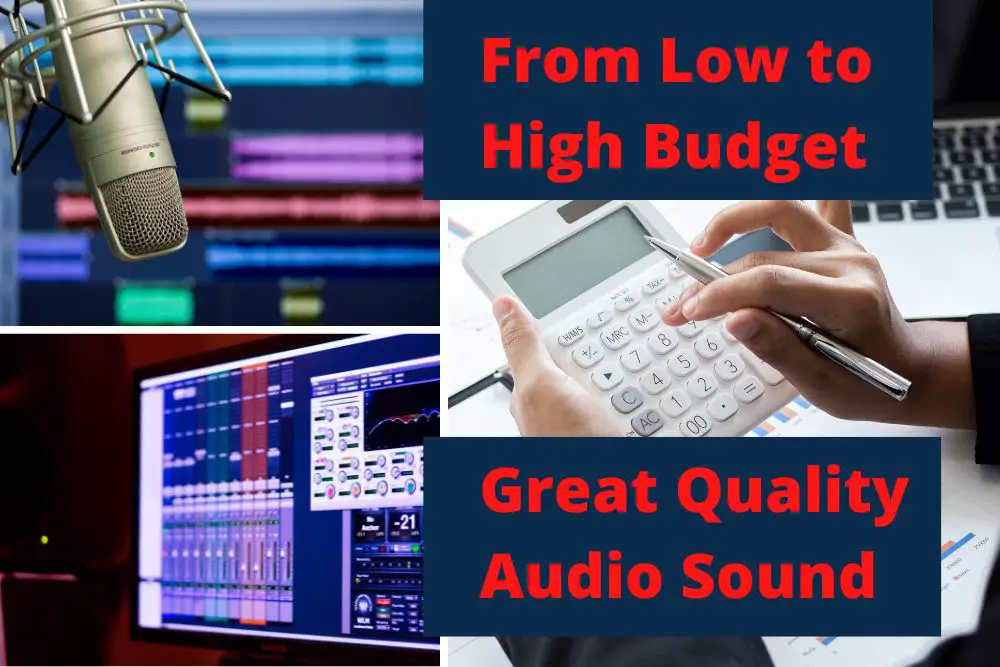The publishing industry has been growing by over 20% every year in the past decade thanks to the great acceptance of audiobooks. This means that this derivative work is in high demand and new talented narrators are wanted. If you’re an author, you can also narrate your own work and reduce your production budget to the minimum.
To record an audiobook on a low budget you need to use a USB microphone, a laptop, a portable small sound booth, a free trial or free open source digital audio workstation, and a portable tablet/smartphone stand. All this will cost under $200. Make sure that you can avoid any unwanted noises (street noise, footsteps, barking, household appliances, airplanes, etc.).
In this post, first, I’ll show what is the lowest budget that can provide professional results for authors who narrate their own work, or new narrators who want to create a high-quality portfolio and get into this growing market.
Then, you will know How to Record an Audiobook on a Medium Budget, knowing what equipment will allow you to work longer hours while keeping the same professional standards. Finally, you’ll know How to Record an Audiobook on a High Budget, and what’s the most suitable equipment that will definitely bring the best results as an experienced audiobook narrator.
How to Record an Audiobook on a Low Budget
To record an audiobook on a low, medium, and high budget, make sure you know very well what are the ACX audio submission requirements.
This will help you understand why professional non-expensive audio recording equipment can deal with these professional standards for producing audiobooks, not only for Audible or any other audiobook retailer but also for any other publishing house or voice-over client.
To record an audiobook on a low budget you need the following equipment:
| Equipment | Average Price | ACX Audio Submission Requirements |
| USB Microphone(Stand included) | $129.99 | The cardioid pattern will avoid most of the unwanted noises |
| USB to Type C adapter | $8.99 | It will enable you to record with a USB cardioid microphone on a smartphone or tablet |
| Laptop / Tablet | In most cases, people already have a laptop, desktop, tablet, or smartphone | You will be recording digital audio directly to the hard drive/internal memory of your device |
| Portable Sound Booth | $42.99 | Your voice will be recorded 90% free of reverberation and echo If you still hear unwanted noises in your recording, consider using insulating materials applied on the places where the sound comes in |
| DAW software for computers | Free full version 60-day trial: REAPER Free full version: AUDACITY | REAPER: The 60-day trial software is the full version. It contains all the necessary plugins (Gates, Compression, Equalization, Normalization) to comply with the ACX submission requirements. After the trial period ends, the software will run perfectly but it won’t update unless you pay for the license ($60). Reaper is just perfect, and I sincerely prefer it over Pro Tools. It does the job and also includes the main effects (they don’t call them plugins) to comply with the ACX submission requirements. |
| DAW for smartphones and tablets | Free voice recorders included in your device Garage Band (Mac devices) Logic (Mac computers) | Attention: smartphones and tablets are good to record but limited to editing and applying plugins. Export the recorded WAV files from the device and import them into the DAW on a computer. Garage band allows editing, cutting, and inserting compression and gates. Make sure the recordings are at 44.1 kHz 16-bit depth WAV files. Logic is a great DAW. It contains all the necessary plugins (Gates, Compression, Equalization, Normalization) to comply with the ACX submission requirements. |
| Tablet/smartphone portable stand | $9.99 | As all the equipment will be placed inside the portable vocal booth, using a portable tablet/smartphone stand will allow you to read from those noise-free devices. |
| Total Cost (without a tablet or computer) | 191,96 |
- A good quality cardioid USB or condenser microphone is a must in the recording stage
- USB microphones can be condensers and receive the voltage from the USB port
- XLR condenser microphones need a device to feed the 48V, also called Phantom Power
- Using a good quality condenser cardioid mic is part of medium-budget recording equipment (see more details)
- The editing stage (compression, gates, equalization, normalization, cutting, and gluing) is the one that will provide the professional results to comply with the ACX audio submission requirements
Audiobook Recording Process Using a Low Budget
- Set the portable booth on a flat even surface (table, desk, etc).
- Place the USB microphone and tablet stand in a way that they don’t interfere with each other (you need to tap the screen of the tablet without bumping into anything else).
- Place the laptop or computer outside the portable booth, but close enough, so you can easily lean to one side and check the recording process in the DAW.
- Make a delicate cut in the acoustic foam, so you can pass the USB cable through, to connect the laptop to your microphone.
- Start recording. Be patient. Persistence is the path to success.
- Once you finish recording each chapter and the necessary additional takes every time you have detected a mistake and re-recorded the correction, save the file with the title of the book and chapter number.
- Make sure you have already created a folder with the name of the book. Inside that folder, create two more folders. Label one with the title of the book and the word RAW. Call the other with the book title and EDITED. Feel free to use any other labels, but just make sure you have raw takes and edited tracks on separate folders.
- Make sure each main folder is set to have a security copy in the cloud.
Keep in mind that you can get professional results using this setting. I have heard several audiobooks on Audible whose narrators work when traveling and use this low-budget portable equipment.
I can tell they are using a small portable sound booth when I listen to a chapter at a very high volume (for a short time, of course, to protect my ears) because only in that way it’s possible to perceive a little reverb from the room or space where they place the booth.
That’s almost never perceived by an audiobook listener because listening to extremely high volume levels is fatigating and harmful.
In terms of audiobook recording techniques and equipment, low-budget is not a synonym of low quality but easy portability.
Click here to know How to Record an Audiobook on a Medium Budget.
Click here to know How to Record an Audiobook on a High Budget.


